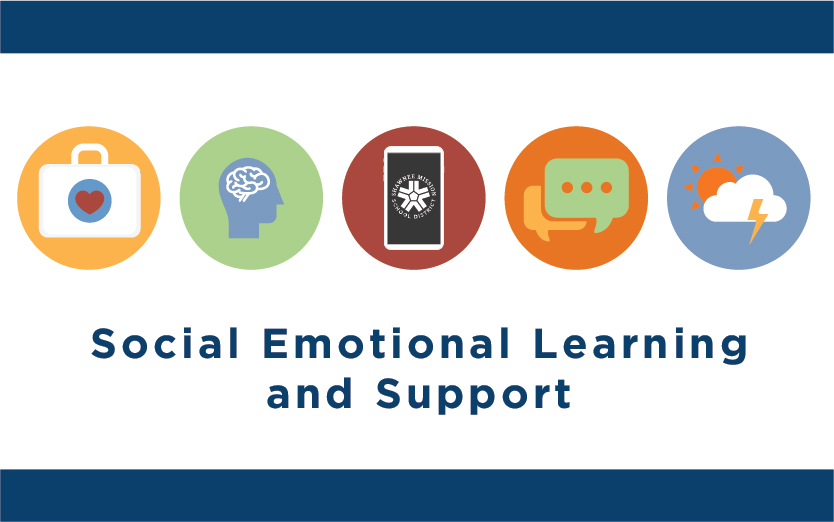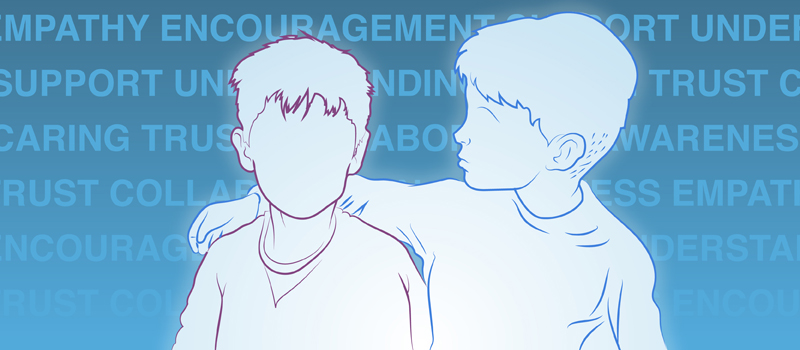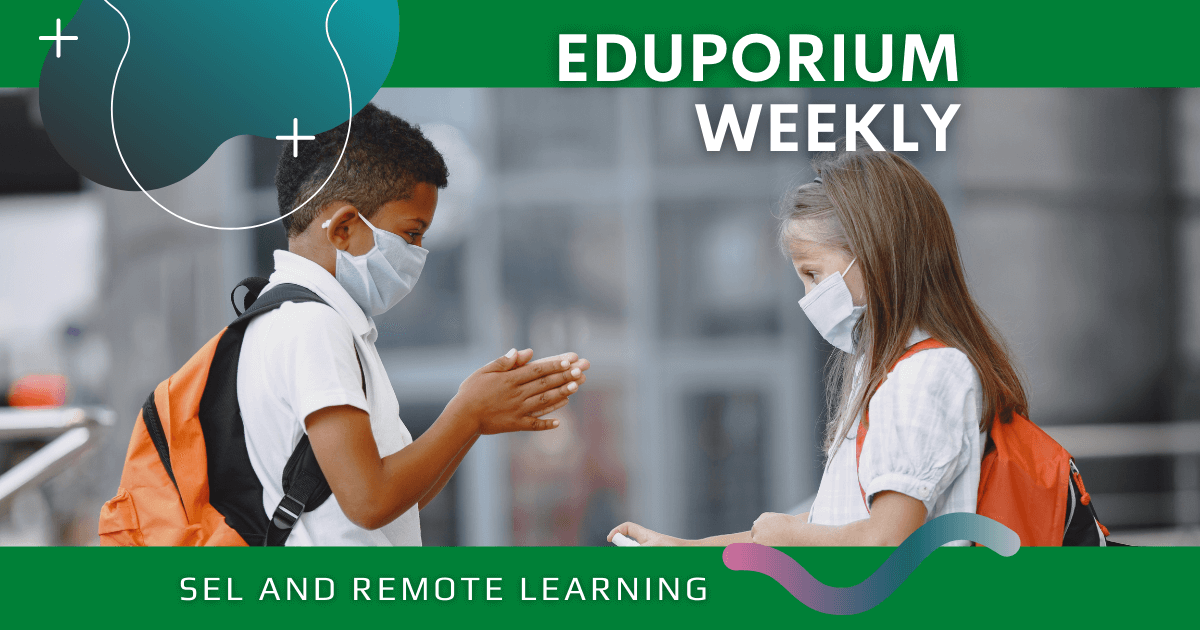Many educators and administrators are realizing the importance of focusing on social-emotional learning as students return to the classroom. But, what about those students who will still be doing remote learning at the start of the school year? They’ll have social-emotional needs, too. Establishing connections between these students and their new teachers is going to be important for ensuring success throughout the school year, but it’s probably going to be tougher as well. Teachers will be unable to physically connect with their students, which is such a huge part of relationship building and, especially since learning in most of the country’s largest school districts is fully remote, students are going to soon be approaching seven or eight months without being in a classroom. So, how can teachers incorporate SEL in remote teaching and learning?
Tips for Bringing SEL into Remote Teaching
Remote learning is tough enough on teachers and students but it's more challenging if students are afraid or disengaged. Some of them may have hardly seen any other people besides those with whom they live. So, teachers should be mindful of social-emotional strategies when beginning to teach online this year. But, even if they are aware of the fact that some students may need emotional support, providing it can be very challenging, especially since there’s already such little time for getting to know each new student and then teaching the required content. Well, building positive student-teacher relationships is important and it can start with something as simple as one-on-one check-ins. Positive student-teacher relationships can improve learning outcomes and teachers can try this with students who need extra emotional support. Meeting with students or parents can also help teachers get to the source of issues and create an action plan.
Weaving SEL elements into remote instruction.
Besides that, teachers can weave SEL strategies into the instruction they do deliver. Staying organized in remote learning helps ensure students aren't too overwhelmed. Planning and self-regulation are also important parts of social-emotional health and teachers can weave these into common academic subjects. Showing students how to access lessons and assignments right away can help familiarize them with new routines and avoid stress. Another strategy is to talk about current events rather than shying away from them. Of course, this means talking about the pandemic and using it as a teaching moment. Teachers can assign relevant articles for students to read so they can learn about the STEM behind treating it (just one example of how to make it educational).
Using student anxiety for good.
If teachers notice students are still anxious in remote education, encouraging them to channel that anxiety productively can help. They can do this with project-based learning experiences that require active investigation and finding solutions to real problems. It can be within their school, their community, or even their household, but contributing to a solution can help students refocus and beat some of that anxiety. Finally, teachers can actively share stress-reducing strategies and advice for managing emotions with their students. Leading by example can help this to come out and potentially help students improve their focus. There are also mobile apps and online tools teachers and students can use to practice mindfulness and hopefully bring some more balance and higher comfort levels to the remote classroom this fall!
Planning for SEL in Remote Teaching
With the shift to remote learning (and the decision to keep remote learning in place in a lot of cases), the decision to focus on SEL has been apparent for many. Of course, under normal circumstances, it’s easier to incorporate social-emotional lessons. Since time is precious and resources may be thin, however, it’s understandably tougher. Building relationships is also tougher in a remote environment. That’s why we’ve pretty much come to terms with the fact that, in order for SEL to be a real part of remote teaching and learning, teachers must be intentional with implementation. On the other side of the equation, the good news is that social-emotional themes and lessons can still help teachers build relationships with students, set expectations, and settle into new routines—even remotely.
Building relationships in remote learning.
One way to build relationships is connecting with students as a whole class in addition to meeting in small groups. Hopefully, technology can be used to help build these relationships and, if video chat software is available to you, it’s the next best thing to actual face-to-face communication. Conversation starters and fun activities for students are some other ways to help them build relationships with teachers and peers. Whenever possible, let students use their creativity and express themselves in their assignments—this is key for social-emotional health. Also, teachers can weave SEL themes into any subject and projects by focusing on concepts like empathy, gratitude, and self-awareness.
Reflecting on SEL lessons in remote learning.
Another important element of SEL, especially in remote learning, is the opportunity to reflect. This can work in writing classes, for example, simply by having kids think about their feelings and write them down. For some kids, this may also be easier than verbalizing their feelings, especially if they include fears or anxieties. Plus, when teachers routinely use the same language in their lessons—language that reinforces social and emotional health—students will get better at identifying it. As students share their thoughts or feelings more frequently, they should become more comfortable with opening up more. And, this goes a long way in building those key relationships. So, if you were curious about strategies for building virtual relationships, we hope you’ll give some of these a try!

Bringing SEL Goals to Remote Learning
When educators commit to focusing on social-emotional learning in their instruction, they’re doing so with a purpose in mind. That purpose could be to make sure their students are as emotionally healthy as possible, to help them build relationships, to help them share their feelings, or one of many other things. The thing about SEL—like other areas of the curriculum—is that educators strive to have students meet certain outcomes. So, how do they do that? Goal-setting helps students recognize what teachers expect of them and what they should accomplish. And, when students meet their goals, it’s important that teachers acknowledge that they’re proud, reinforcing the achievements they’ve made.
Setting goals in remote learning.
Purposefully setting clear goals for students is possible in all academic subjects and, when you want to also focus on SEL, those elements can also be part of the goals and lessons. When students know what teachers expect of them, they can practice self-discipline and self-awareness and celebrate when they reach those goals. Both short-term and long-term goals are important and teachers can apply them in remote learning. Short-term goals tend to focus on having a good day while long-term goals could focus on having a good month or a good year by consistently sharing feelings or building relationships with peers or teachers. Teachers can also encourage students to set their own goals—ones they know they can attain. They don’t have to be related to SEL either; they can be academic goals and students will still feel proud of themselves when they achieve them.
Connecting grit and SEL in remote education.
Another way to continue SEL remotely is to regularly encourage grit. In education, grit commonly refers to a student’s ability to take failures well, learn from their mistakes, and apply them as they come back stronger in their next attempt at accomplishing something. Having a strong foundation of grit also helps boost their overall social-emotional health. Developing grit can become a part of remote learning when students get frustrated with something like figuring out how to connect for class meetings, figuring out how to turn in assignments, or feeling lonely. Teachers and parents can model positive examples of grit for these students and reward them when they do the same. It’s also often helpful to celebrate milestones in SEL development whether they’re academic or SEL-related. Having goals for students to work towards can really help them reach their potential and realize when they do.
Strategies for Teaching SEL Remotely
There are many ways educators can ensure students are still able to develop socially and emotionally despite learning remotely. An effective solution for one student might not work for another but it’s very important for every student that SEL continues to be part of their learning. The pandemic has changed how teachers create and deliver lessons and as well as their pedagogical approaches and relationship building remains among the biggest needs. So, how can teachers do this successfully? Well, it starts with them focusing on themselves and prioritizing their own well-being. It’s almost impossible to teach skills and themes they aren’t practicing themselves and, since students are always observing others’ behavior, they’ll see how their teachers manage emotions, interact with others, approach problems, and maintain their attitude.
Focusing on the positives.
Another suggestion is to keep negative thoughts to yourself and try to minimize them. We totally get this can be tough, especially in today’s educational and political worlds, but expressing negativity can poorly impact your own attitude and student attitudes as well. Instead, try focusing on building positive relationships with students by talking about something other than this situation. Asking how they keep busy, what they hope to learn, or their hobbies can create connections and distractions from negativity. When teachers show students that they genuinely care, it helps students trust them more as they develop a stronger relationship. Teachers can also lead by example and show SEL strengths intentionally and subtly. In remote learning, it’s possible to be both direct by saying certain things that are more clear and indirect by saying things that make students think—but both can help advance SEL.
Using SEL to create routines.
To cap things off, educators can start the year by focusing on structure and continuity without forcing things too much. This helps get students into a routine and helps them know what to look for in their SEL development. Kids are returning to school after experiencing many different things at this stage of the pandemic and presenting SEL content in new ways might be necessary. Finally, it can be helpful for teachers to ask parents for help when delivering SEL lessons remotely. They’re the ones who are with students and teachers can use this to their advantage by connecting with parents. Sharing themes and concepts that they’ll be focusing on with students to parents through emails or brief conversations can allow the parents to go on and use them in everyday conversations around the house with their kids, helping to reinforce the SEL elements of education even more.

Different Aspects of SEL in Remote Learning
The first things we think about when continuing social-emotional learning virtually are student well-being and building relationships. There are, however, a lot of other reasons for teaching SEL as well as benefits for doing so. Students need to feel safe to learn effectively and connections with teachers, peers, and their learning environment are key. Building predictable routines is the first piece of the puzzle, but working to build a sense of community is another element of bringing SEL to remote education. This is possible with virtual platforms and—just like when learning in person—social-emotional tie-ins to remote learning are important. Interactions with students should be visual, consistent, and deliberate and that’s how students will see and learn how to act, react, and communicate during this unique time.
How to schedule time for SEL.
Devoting a small amount of time to explicitly teaching students SEL skills is also valuable. We typically advocate for weaving SEL concepts and teaching SEL skills, like self-awareness, decision making, and self-management, into instruction. So, taking a few minutes to address what these mean directly can be just as beneficial for students. Knowing how to address their thoughts and feelings in a healthy way can help students overcome stress, isolation, or uncertainty. Forming a plan is a good first step and, if it can involve other members of the school community, parents, and students as you try to re-establish continuity and solidarity, it can lead to more successful SEL gains in remote learning.
Sharing the truth with students.
Last but not least, students will have questions—like always—on a lot of different topics, including the pandemic, equality, and when they can go back to school. Teachers might not have answers but they can talk to students about their feelings, especially if they're stressed. Letting parents or administrators know what was asked or discussed after the fact is also important and can help anybody who needs to find the right resources for moving forward. Finally, teachers may have to deal with inappropriate student behavior during live class meetings. This can be tough but it also comes down to the same approach as they'd use in the classroom. Taking the student aside (virtually) and talking to him or her, giving them the opportunity to correct their behavior, and trying to identify a deeper issue can help teachers address instances of student misconduct in the virtual classroom.
For the latest EdTech, STEM, and 21st century education news, follow us on Twitter and Instagram. Like us on Facebook, too, or sign up for our newsletter for our latest product announcements and offerings. If you have an idea for an Eduporium Weekly theme, send us a message on social media or comment below.



